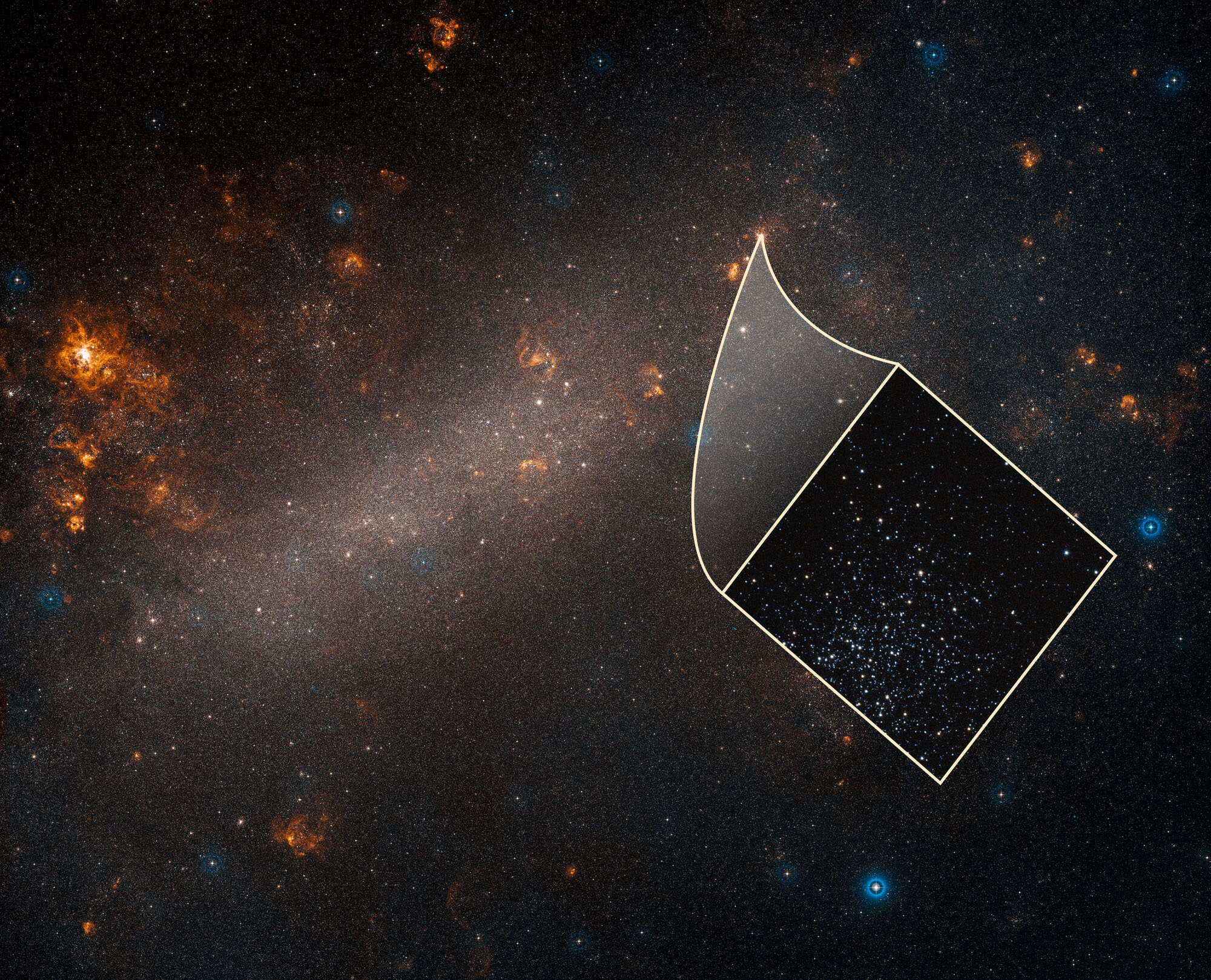Edwin Hubble is an astronomer after whom the space telescope was named after him. It is to the scientist that primacy is attributed to the appearance of the known Hubbles’s Law and his expansion constant.
The data in the table (galaxies) indicate a linear correlation between distances and speeds.
Schematically, it looks like this: v = Hd, where v is the velocity of the moving away object, d is the distance, and H is the Hubble constant.
In the modern world, this law is expressed as the ratio of the redshift and the galactic distance. He became the first direct evidence that the general theory of relativity applies to the entire Universe, which Georges Lemaitre proved 2 years before (in his article a constant is also derived). The universality of the theory lies at the heart of the Big Bang, as well as in our vision of expanding space.
Of course, much of the work on measuring redshifts was done by other astronomers (like Vesto Silfer), but it was Hubble who created the methods for estimating the distance to galaxies and put everything together to demonstrate the relationship between distance and speed.
But the Hubble Law is not always accurate. In some galaxies, the redshift is different from what was predicted. This is especially evident in galactic clusters and is explained by general movement in local groups or mutual attraction.
However, the exact value of the Hubble constant is incredibly important, since the calculation of the age of the Universe depends on it and helps to verify the theory of dark matter and dark energy. Now it reaches 71 km/s per megaparsek (+/- 7). It is about 21 km/s per million light years. That is, an object located in a million light-years, will move away from us at a speed of 21 km/s.
The most critical review of the constant carried out in 1998, when it was discovered that the Universe is not just expanding, but also accelerating in this process. From this moment dark energy begins to appear.
Hubble space telescope again showed that the universe is expanding faster than is commonly believed
The data obtained from observations of Cepheids in the Large Magellanic Cloud, next to the Milky Way Galaxy, confirmed that the Universe is expanding about 9 percent faster than expected based on the results of the ESA “Planck” satellite, and a new physics. The results of the study are presented in the journal Astrophysical Journal Letters.
The probability that the discrepancy is an accident has been reduced from one three thousandth to one thousandth. Now it cannot be denied and must be reckoned with, and this is very unexpected.
-Nobel Prize winner Adam Riess of John Hopkins University in Baltimore (USA), who heads the project to refine the space remote ladder and lead author of the study
In the general understanding of the expanding universe, the farther a star or a galaxy, the faster it runs away from us. The Hubble Constant proposed by Edwin Hubble in the 1920s answers the question: how much?

One approach to measuring this velocity is to observe the redshift of bright type Ia supernovae, the light of which stretches as the space it overcomes expands. However, the main problem lies in determining the exact distance to these stars.
Adam Riess, who won the Nobel Prize in Physics in 2011 for proving the accelerated expansion of the Universe, is part of the team that develops high-precision methods for measuring distances. In 2016, using the Hubble space telescope to calculate distances to galaxies from the luminosity of the Cepheids observed in them (a class of pulsating variable stars with a fairly accurate period-luminosity dependence), they obtained a Hubble constant value of about 73 kilometers per second per megaparsec, which more constant derived from observations of the background radiation and equal to 67 kilometers per second per megaparsec.
The discrepancy means that with each subsequent megaparsek (3.3 million light years), the escape speed of galaxies from us increases by 73 kilometers per second, and not by 67. The problem is that this value is taken into account in models describing the age and composition of the Universe, as well as the fundamental laws of physics.
Until recently, scientists believed that as the measurements became more accurate, this inconsistency would disappear, but instead the difference was confirmed, and the last updated calculations using the new Hubble method of observations for the 70th variable Cepheids in the Large Magellanic Cloud again gave a value of 73 kilometers per second per megaparsec with an error of only 1.9 percent. This estimate strongly contradicts the value of the Hubble constant obtained by the ESA Planck satellite as a result of observations of the expansion of the Universe 378,000 years after the Big Bang.
These are not just two inconsistent experiments. We measure something fundamentally different. The first is the measurement of how rapidly the presently visible Universe is expanding, and the second is a prediction based on the physics of the early cosmos and data on how quickly it should expand. And, since the values obtained do not coincide, there is a very high probability that we are missing something in the cosmological model that binds two eras.
Despite the fact that astronomers do not yet have an exact reason for the discrepancy, which seems to be explained with the participation of dark matter and dark energy, they will continue observations to clarify the Hubble constant in order to achieve an error of no more than 1 percent.
Hubble’s law and expansion constant
Click To Tweet
The post Hubble’s law and expansion constant appeared first on Upcosmos.com.
